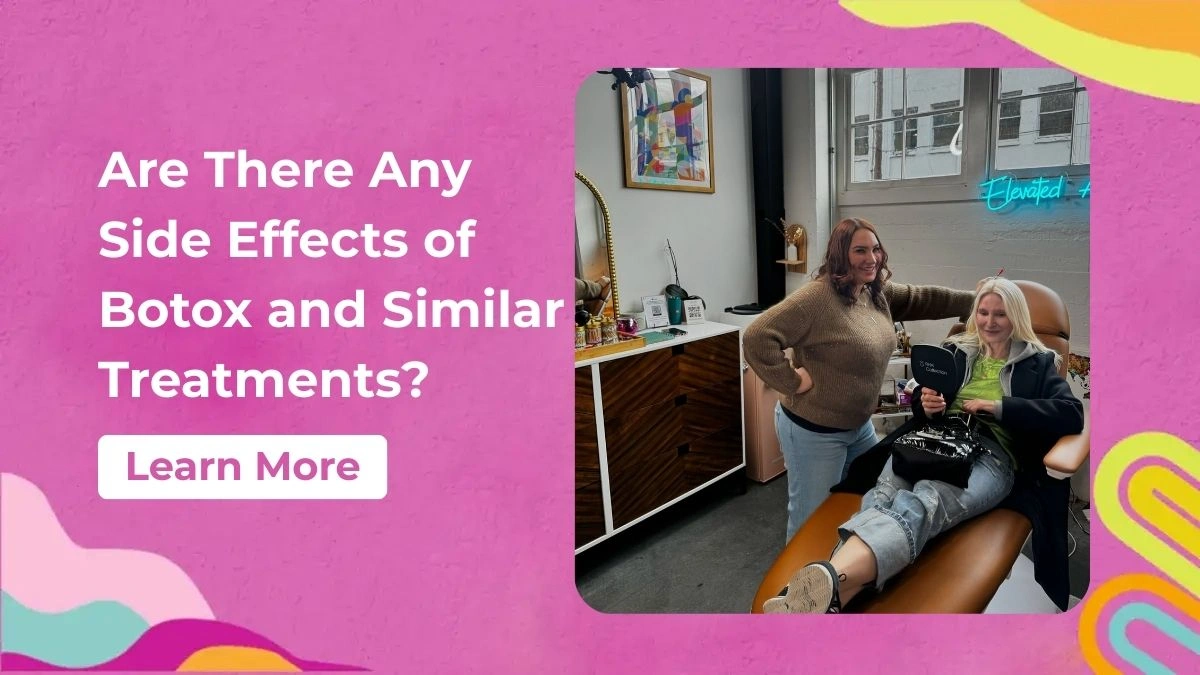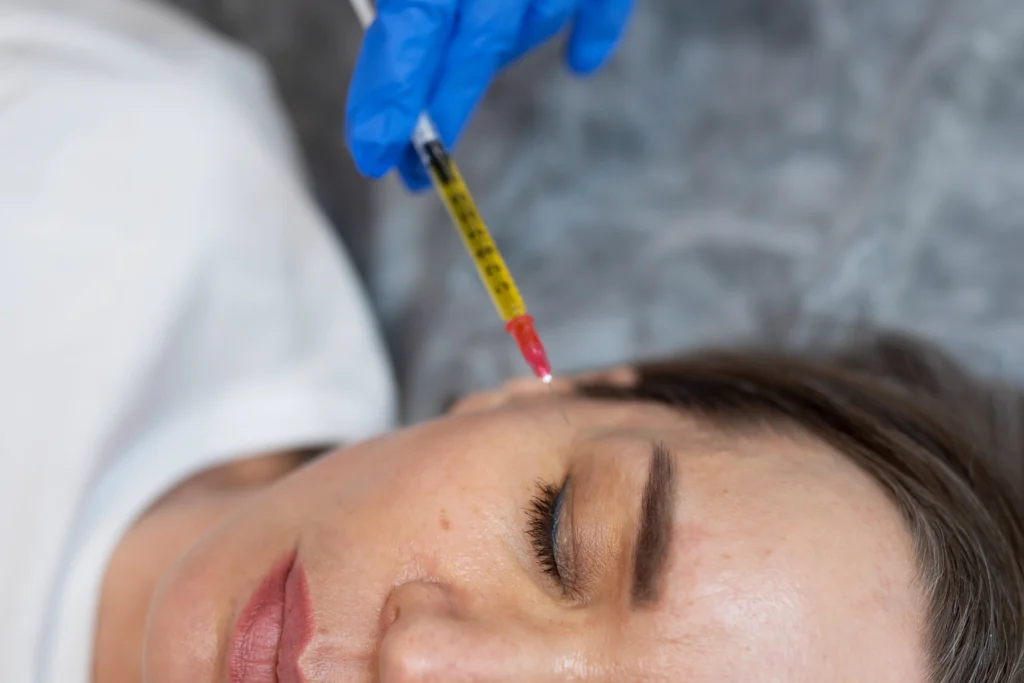Botox stands as the world's most popular cosmetic procedure, with nearly three million injections performed each year. People know about its ability to reduce wrinkles, but many overlook Botox's potential side effects before getting treatment. Pain, swelling, and bruising at the injection site rank among the most common but temporary side effects of botox. More …

Botox stands as the world’s most popular cosmetic procedure, with nearly three million injections performed each year. People know about its ability to reduce wrinkles, but many overlook Botox’s potential side effects before getting treatment.
Pain, swelling, and bruising at the injection site rank among the most common but temporary side effects of botox. More serious complications have raised concerns lately. The CDC’s April 2024 report revealed that counterfeit Botox caused harmful reactions in 22 women, sending 11 to hospitals. Research shows that Botox’s long-term effects can lead to muscle atrophy, and these changes might persist up to four years after the last injection. Patients should understand which side effects truly matter. The next appointment requires careful consideration of everything from common reactions like headaches and flu-like symptoms to rare but serious complications such as difficulty swallowing.
For those concerned about these risks, exploring Botox alternatives – like peptides, microneedling, or dermal fillers—may provide safer or better-suited options based on individual needs.
What are the side effects of Botox and similar treatments?
Botox’s temporary effects match its side effects that usually go away within days or weeks. Patients experience mild reactions, but they should understand all possible outcomes before getting treatment.
Common Side Effects of Botox
| Side Effect | Frequency | Duration |
| Pain/bruising at injection site | 11-25% of patients | 2-7 days |
| Headache | Common | Few days to 4 weeks |
| Flu-like symptoms | Common | 24-48 hours |
| Temporary drooping eyelids | Common | Up to 6 months |
| Muscle weakness | Common | Duration of treatment |
| Neck pain | Common with certain treatments | Few days |
| Dry/irritated eyes | Common with periorbital injections | Few days |
Botox injection side effects stay local, reverse themselves, and limit their duration. They usually show up within days after treatment and disappear without extra care.
Serious but Rare Complications:
Botox can cause more serious concerns, though uncommon. The most important side effect involves toxin spreading beyond the treatment area, which leads to botulism-like symptoms including:
- Widespread muscle weakness
- Breathing or swallowing difficulties
- Vision problems
- Slurred speech
A CDC alert from April 2024 showed 22 women had harmful reactions to counterfeit Botox, and 11 needed hospital care. A 2020 study found that serious adverse effects from cosmetic Botox use happen nowhere near as often as with therapeutic uses.
Allergic reactions range from local redness to severe anaphylaxis that needs emergency care. Research from UCL revealed that 69% of people reported long-lasting adverse effects from Botox.
Qualified providers who use FDA-approved products help prevent complications. Patients should tell their complete medical history and stay away from blood-thinning medications before treatment to reduce bruising.
Factors that influence Botox side effects

Your chances of experiencing Botox side effects and their severity depend on several important factors. A good understanding of these variables helps you stay safe during treatment.
Key Factors Influencing Botox Side Effects
| Factor | Impact on Side Effects | Risk Reduction Strategy |
| Provider Experience | Substantially reduces complication rates | Choose practitioners with specialized training and proven results |
| Injection Technique | Improper placement can cause drooping eyelids | Direct digital pressure isolates injection sites from sensitive areas |
| Dosage | Higher doses increase risk of complications | Start with conservative doses, especially for first-time patients |
| Dilution Volume | Affects diffusion and duration of effect | Lower volumes for small muscles, higher for larger muscle groups |
| Patient Medical History | Identifies contraindications | Disclose all medications and conditions |
| Treatment Intervals | Prevents toxin accumulation | Respect recommended waiting periods between treatments |
Your provider’s skill is vital in preventing complications. Practitioners without enough experience might inject wrong locations. This can lead to saggy skin areas or “frozen” facial expressions. Injections should stay outside the “orbital zone” safely. The corrugator injections need placement at least 1 cm above the supraorbital ridge.
Proper dosage makes a big difference. Individual reactions can be unpredictable. That’s why lower original dosages work better for first-time patients. Better results often come from multiple smaller-dose injections rather than fewer larger ones.
Your unique characteristics play a big role too. Your genetic makeup affects how you react to Botox through skin sensitivity, toxin receptor densities, and metabolism genes. Each treatment must match your individual needs.
Botox can interact with other medications. A full medical history becomes essential. Safety concerns prevent treatments during pregnancy or nursing. You should stop blood-thinning medications several days before injection to lower bruising risks.
Most complications stay away with proper patient assessment, good technique, and personalized dosing. It’s worth mentioning that “one-size-fits-all” approaches rarely work in Botox treatments.
Long term effects of Botox: What we know so far
Research now reveals how multiple Botox injections affect our bodies beyond just temporary side effects. Anyone who plans regular treatments should know what it all means.
Documented Long-Term Effects of Botox
| Effect | Timeline | Reversibility | Supporting Evidence |
| Muscle Atrophy | Visible after multiple treatments | Mostly reversible | Up to 48% reduced muscle volume lasting 12 months |
| Facial Expression Changes | Gradual over repeated treatments | Partially reversible | Altered ability to make Duchenne smiles |
| Emotional Processing Changes | After single treatment | Unknown | Brain activity changes in amygdala and fusiform gyrus |
| Potential Mood Benefits | 2-3 months after treatment | Temporary | 9 out of 10 participants with depression showed improvement |
| Sexual Function Impact | During active treatment | Reversible upon cessation | Decreased satisfaction reported |
| Muscle Architecture Changes | After repeated injections | Partially reversible | Increased collagen content in muscles |
| Skin Thinning | After extended use | Partially reversible | More visible veins possible |
Muscle strength doesn’t fully bounce back to normal even after six months from the last injection. This happens because of higher collagen levels and reduced active muscle force.
Botox use over time seems to affect our psychology too. Research shows that targeted injections can swing mood both up and down based on which facial muscles receive treatment. People who get frown lines treated often feel less depressed, while treating laugh lines around the eyes might reduce positive emotions.
The muscles around our eyes play a vital role in genuine “Duchenne” smiles. When these muscles become less mobile from Botox, people might experience psychological effects and reduced sexual satisfaction.
Some evidence points to Botox traveling through the nervous system. Laboratory studies detected toxin molecules moving along neurons, though they used much higher concentrations than typical cosmetic treatments.
Facial muscles adapt to Botox as time goes by. This adaptation might mean fewer treatments needed to maintain results.
Conclusion
Botox treatments are popular, but they can cause various side effects. All the same, when qualified professionals handle the procedure, most complications don’t last long and are easy to manage. Research shows that common side effects like bruising, headaches, and temporary muscle weakness usually go away within days or weeks on their own.
The study’s risk factors highlight how crucial it is to pick the right provider. Without doubt, doctors who have plenty of experience and use the right techniques, doses, and FDA-approved products reduce complications by a lot. On top of that, sharing your complete medical history before treatment helps avoid bad reactions.
The long-term effects we’re now seeing are eye-opening. Muscle shrinkage, changes in facial expressions, and how these treatments affect emotional processing need careful thought. Many effects can partly reverse, but changes to muscle structure might last for months or even years after treatment stops.
Patients should weigh these side effects against the beauty benefits they want. Botox is safe when done right, but smart choices come from knowing both immediate and future risks. The decision to use Botox needs careful thought and a clear understanding of what science tells us about its effects on our bodies and minds.
Ready to make an informed decision with expert guidance? Book a consultation at Elevated Aesthetics and let our qualified professionals help you explore safe, science-backed treatments that align with your beauty goals.
Visit elevatedwithelana.com to learn more or schedule your appointment.




